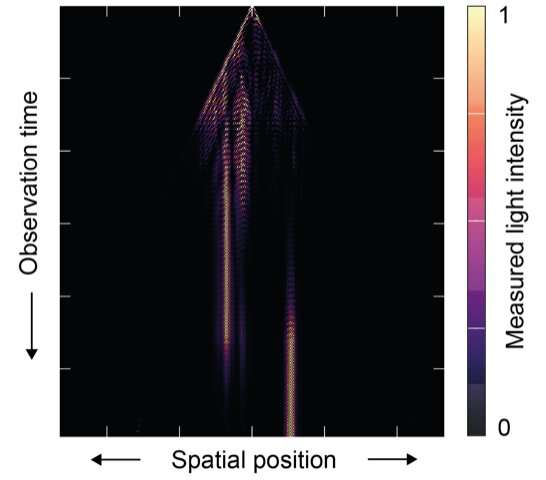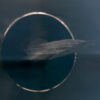Professor Alexander Szameit and his group of physicists from the University of Rostock, in collaboration with Professor Stefano Longhi from the Polytechnic University of Milan, discovered a novel and paradoxical behavior of light waves: Despite being tightly confined in a microscopic volume, a new kind of disorder allows optical signals to suddenly show up at far away regions. Such abrupt transport had previously been considered impossible, and challenges the current understanding of light waves. Their discovery was recently published in the prestigious journal Nature Photonics.
In 1958, Phil Anderson astonished the scientific community by predicting that an electrical conductor—such as copper—will suddenly lose its conductivity and turn into an insulator, as soon as its atomic lattice is perturbed beyond a critical level: In the jargon of physicists, “disorder” can bring the free motion of electrons to a halt and block any electrical current from flowing through a previously conductive material.
This so-called ‘Anderson localization’ lies outside the scope of classical physics, and only a quantum-mechanical treatment of electrons as both particles and waves can explain the metal-insulator transition resulting from it. Today we know that this effect, for which Phil Anderson won a share of the Nobel Prize in Physics 1977, applies in general: Disorder can likewise suppress the propagation of sound waves or even light beams.
Since college, the intriguing properties of light and its interaction with matter have fascinated Alexander Szameit. Just recently, the Rostock professor and his graduate students Sebastian Weidemann and Mark Kremer made a surprising discovery: Every realistic physical system inevitably exchanges energy with its environment, and, as soon this energy exchange becomes disordered, (light) waves can also become localized. This new class of disorder transcends the mechanism that Phil Anderson considered in 1958, since his calculations were based on the assumption that no interactions take place with the environment. Szameit explains: “In our experiments, we could clearly observe how light becomes focused into tiny regions in space, as soon as the energy exchange in the environment becomes randomized”.
At first glance, these results appeared to be merely a generalization of the well-known suppression of transport. However, much to their surprise, the researchers soon discovered quite the opposite: “At first, we did not believe our eyes when we saw how the brightest light spot seemed to suddenly jump to an entirely different regions in space, again and again, even though conventional light propagation should have been suppressed entirely arrested by the disorder.”
Responsible for this hitherto unknown behavior of light waves is the complex energy exchange with the environment. Prof. Szameit says, “Any remaining doubts vanished when were able to prove that this effect can shuffle around light signals between specific points in 5-kilometer-long optical fiber.” These pioneering results are a conceptional breakthrough for fundamental science, and the universal nature of the underlying mechanism may inform new techniques to shape not only the flow of light, but of acoustic or particle waves as well.
One-dimensional Anderson insulators predicted to host the bulk photovoltaic effect
More information:
Sebastian Weidemann et al, Coexistence of dynamical delocalization and spectral localization through stochastic dissipation, Nature Photonics (2021). DOI: 10.1038/s41566-021-00823-w
Provided by
University of Rostock
Citation:
Stop-motion photons: Localized light particles on the road (2021, June 18)
retrieved 19 June 2021
from https://phys.org/news/2021-06-stop-motion-photons-localized-particles-road.html
This document is subject to copyright. Apart from any fair dealing for the purpose of private study or research, no
part may be reproduced without the written permission. The content is provided for information purposes only.



